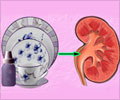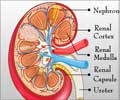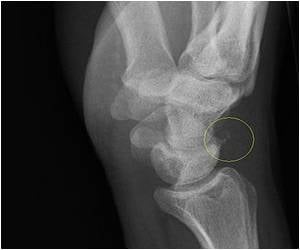A new analysis has found that obese Caucasian females with diabetes and on dialysis due to kidney failure may have a higher risk of the deadly calciphylaxis

"It's all about balance, and our kidneys help regulate that balance," said Huber, who scoured the national database of 2.1 million patients with failed kidneys to better define incidence and risk factors with the goal of better identifying and managing those at highest risk.
Her findings were cited as one of eight best abstracts submitted to the 51st European Renal Association - European Dialysis and Transplant Association Congress May 31-June 3 in Amsterdam.
Huber found the condition occurred in 459, or 0.02 percent, of the patients, who were mostly white, older women on traditional hemodialysis, where an external machine filters the total blood volume typically three times a week rather than the continuous efforts of healthy kidneys.
The median time from the first dialysis treatment to a diagnosis of calciphylaxis was less than four years, median survival time was 176 days, and 50 percent of deaths were within 87 days. Being over age 65, Caucasian, and diabetic are significant risk factors for death from calciphylaxis.
"We are not completely sure why calciphylaxis happens, but mostly it's in dialysis patients," Huber said. While dialysis is literally a lifesaver, it does not completely replace all the filtering work of the kidney, never mind other major functions, such as making the active form of vitamin D, Huber said. Vitamin D increases absorption of calcium, which is essential to strong bones and teeth as well as muscle function, including the heart.
Advertisement
"In end-stage renal disease, we tend to see low calcium and high phosphorus," Huber said. The dysregulation somehow prompts the two to bind in the blood and 'basically make cement," Huber said. The material deposits in small blood vessels, valves and soft tissue, contributing to the vascular complications of life on dialysis.
Advertisement
To try and balance things out, all dialysis patients take phosphorus binders before eating that grab excess phosphorus, found in high levels in animal protein and processed foods, so more will be eliminated from the gut and less absorbed into the blood. Dietitians help patients minimize phosphorus intake, and blood levels of phosphorus and calcium are regularly monitored, often as kidneys are failing and before dialysis has even begun.
However, physicians may need to be even more diligent and aggressive particularly in these high-risk populations, Huber said. This may include additional diet changes, taking more phosphorus binders, and more frequent dialysis. She notes that no prospective studies have measured the effectiveness of these current interventions.
A specific diagnostic code for calciphylaxis – currently, it shares one with multiple other conditions resulting from calcium-phosphorus abnormalities – could ease future studies of this relatively small population of patients, Huber said. This could include examining more detailed clinical information that is currently housed at countless dialysis centers across the country.
Diabetes and hypertension are major causes of kidney failure, although Huber notes that many kidney failure patients are not obese.
Source-Eurekalert











